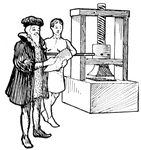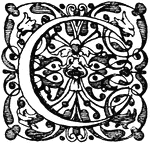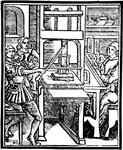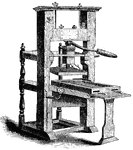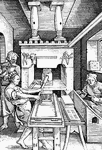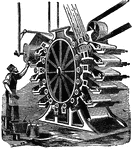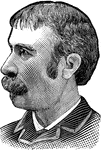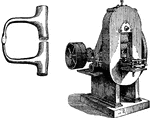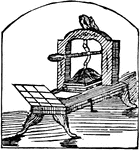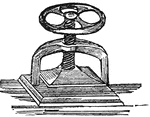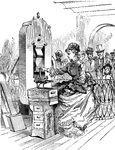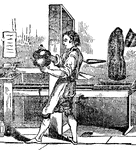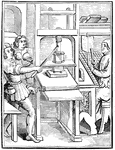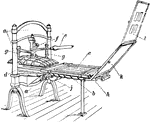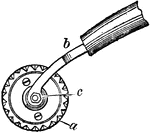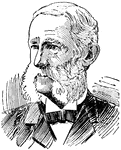
John W. Foster
(1648-1681) Established the first printing office in Boston and is known for the earliest woodblock…

Landing at Parkersburg
"Landing of Federal troops at Parkersburg, Western Virginia. Parkersburg, Va., in 1861 was a thriving…

Village of Clarksburg
"Village of Clarksburg, Western Virginia, headquarters of General Rosecrans. Clarksburg, a post village,…

First Power Press
Tredwell of Boston invented the first power press. The type is raised to meet the platen.
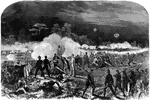
Grant's Campaign
"Grant's Campaign in Virginia. Repulse of Lee's night attack on Smith's Brigade, Hancock's Corps, Friday,…
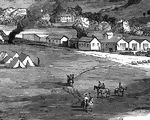
Village of Clarksburg
"Village of Clarksburg, Western Virginia, headquarters of General Rosecrans. Clarksburg, a post village,…
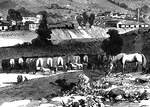
Village of Clarksburg
"Village of Clarksburg, Western Virginia, headquarters of General Rosecrans. Clarksburg, a post village,…
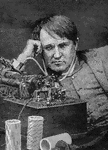
Thomas Alva Edison
"Thomas Alva Edison was born at Milan, Ohio, February 11, 1847, but the family soon after moved to Port…
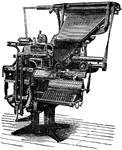
Linotype
"The Linotype is a machine, operated by finger keys, which automatically produces and assembles, ready…
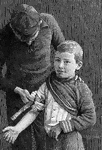
Tourniquet
"Showing how an improvised apparatus, or temporary tourniquet, may be adapted to arrest bleeding from…
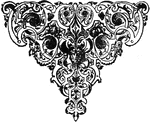
Tail-piece
"A Tail-piece is a piece at the end, as of a series of engravings; an appendage. Also a piece of ebony…
Aim lying down
"In aiming, lying down, raise the piece with both hands; rest on both elbows and press the butt firmly…
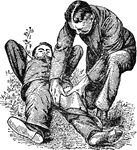
Femoral compression
"In bleeding from the thigh, leg, or foot press backward with the thumbs on the femoral artery at the…
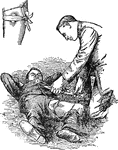
Tourniquet
"The principal of a tourniquet is easily understood, a pad or compass placed on the line of the artery…

Egyptian Wine-Press
"The following is a representation of a wine-press, in which the grapes are squeezed in a bag." —…
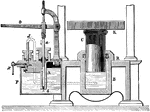
Hydraulic press
"Pascal's law finds an important application in the hydraulic press, in the more common forms of which…
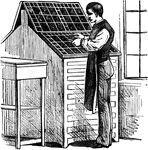
Compositor
"The art of printing from movable types is of comparatively modern origin, only four hundred years having…

Wood Engraving
"The wood used for engraving is boxwood, nearly all of which is imported from Turkey." —The Popular…

Copper-Plate Printing
"In all engraving upon metal plates the traces or marks which are to appear on the paper are cut or…
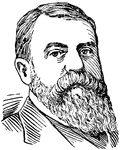
Dwight Moody
An American evangelist and publisher who founded the Moody Church, Northfield School and Mount Hermon…

Printing Press
A mechanical device for printing multiple copies of a text on rectangular sheets of paper. It was invented…
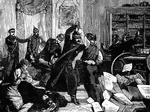
Nihilist Printers
This illustration shows the Russian government destroying a Nihilist printing-office.
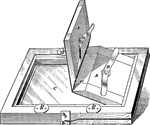
Painting Frame
"A printing frame that is well adapted to sheets not over 17 in. x 21 in. The frame is placed face downwards…
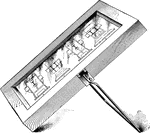
Painting Frame
"A printing frame that is well adapted to sheets not over 17 in. x 21 in. The frame is placed face downwards…
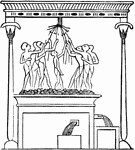
Wine-press
"An Ancient Egyptian Wine-press. The process of treading, which seems to have prevailed from the earliest…

Press-Wheel Roller
An agricultural tool used for flattening land and breaking up large pieces of dirt.
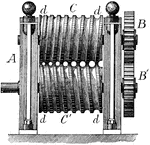
Spiral Roller
A rolling pair of cylinders which metal is passed through to form bars, plates, or sheets.
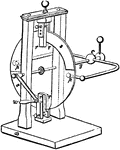
Electrical Machine
"The electrical machine most usually employed consists of a large circular plate of glass, mounted upon…

Lace Machine
"A section of part of a lace machine. E is the cylinder or beam upon which the lace is rolled as made,…
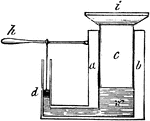
Hydraulic Press
"The pump barrel, a, b, is represented as divided lengthwise, in order to show the inside. The piston,…
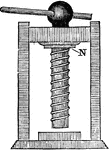
Nut Fixed Screw
"The nut, N, through which the screw passes, answers also for one of the beams of the press. If the…
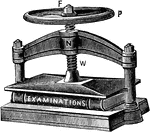
Screw press
"A screw is a cylinder, generally made of wood or metal, with a spiral ridge (the thread) winding about…
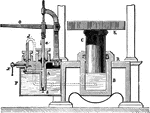
Hydraulic Press
"Pascal's Law finds an important application in the hydraulic press, in the more common forms of which…
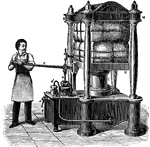
Hydraulic Press, Perspective
"Pascal's Law finds an important application in the hydraulic press, in the more common forms of which…
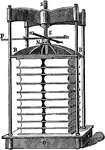
Bookbinder Press
"When force is applied at bar P which turns the screw. The plate B moves vertically with the screw,…

Jaws of a Tiger
Jaws of a tiger, showing that when the jaws are closed the ends of the teeth do not press upon the ends…
